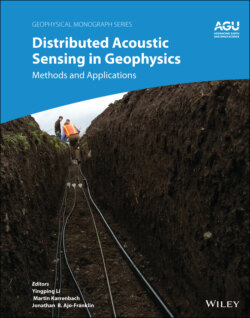Читать книгу Distributed Acoustic Sensing in Geophysics - Группа авторов - Страница 38
2.2.2. Single vs. Multi‐mode Fiber
ОглавлениеOne of the first features to determine is the type of fiber to use as the seismic sensor. Practically all older fiber installations use multi‐mode fiber to enable the acquisition of temperature measurements using distributed temperature sensing (DTS). Most newer installations use a cable with two or more single‐mode and two or more multimode fibers inside. For DAS applications, single‐mode fiber currently provides the best SNR properties as compared to multi‐mode fiber. Single‐mode fiber has a small inner glass core diameter of 9 microns, which only allows a single, virtually direct path for the light to propagate; the light is totally internally reflected within the glass. On the contrary, multi‐mode fiber has a larger glass core diameter of 50 or more microns. While the light is still completely internally reflected, the wider glass core thickness allows for multiple paths, or modes, to be transmitted through the fiber. More light energy can be pumped into the multi‐mode fiber; however, the interference of the light pulse from the multiple paths can interfere with the quality of the DAS strain measurement. Thus, it is advisable to use single‐mode fiber for DAS measurements whenever possible. Multi‐mode fiber can be used for DAS measurements, but it usually requires additional optical hardware and does not normally provide an SNR as effective as single mode.
